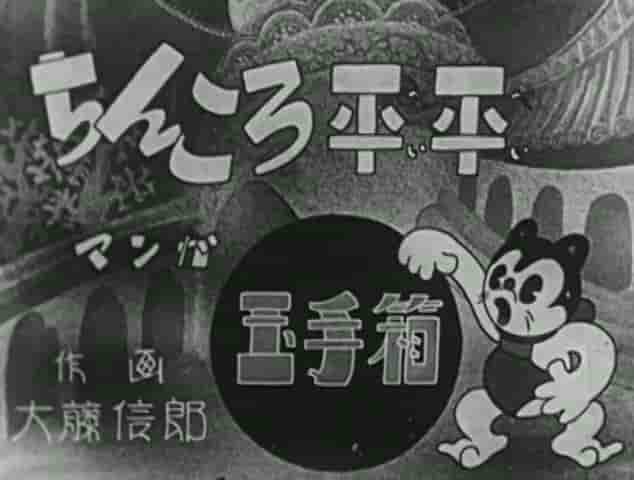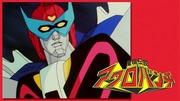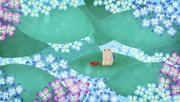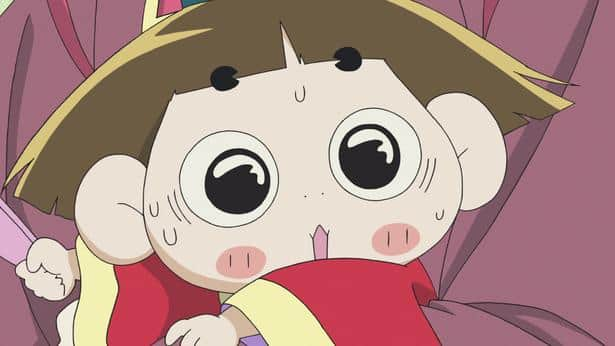Chinkoro Heihei Tamatebako: A look into the unique story and charm of the characters

Chinkoro Heibei Tamatebako - Chinkoro Heibei Tamatebako■ Public Mediatheater ■ Original MediaAnime Original ■ Release date1936 ■Frequencies8 mins ■ Number of EpisodesEpisode 1 ■ DirectorNobuo Ofuji ■ ProductionChiyogami Film Company ■ StoryOne spring day, Chinkoro Heira is enraged when a turtle interrupts his nap. He chases the fleeing turtle to Ryugu-jo Palace. In Ryugu-jo Palace, the Treasure Box is being aired out. Many small crabs appear from the box and cut out paper to make fish. Thinking it would be fun, he tries to enter the castle, but is stopped by the gatekeeper, who says that no one from land can enter. Wanting to get in somehow, he tears off the skin of a fish, disguises himself as a fish, enters Ryugu-jo Palace, steals the Treasure Box, and escapes, escaping from the fish's pursuit. When he opens the Treasure Box, he finds out that it is an octopus monk, who gives him a terrible ordeal and takes the Treasure Box back. ■ExplanationHeihei steals the treasure box from Ryugu-jo Castle. Paper turns into fish, fish turns into octopus, cat turns into fish, whale turns into "Whale Bus". Along with the fun of the characters' transformations, this is a masterpiece with rhythmic gags bursting out throughout the whole story. ■Detailed evaluation"Chinkoro Heihei Tamatebako," released in 1936, is a short animated film produced by Chiyogami Eigasha, and is characterised by its unique gags and amusing transformations. This film is a perfect example of the talents of director Ofuji Nobuo, and can be said to have breathed new life into the world of Japanese animation at the time. The story begins when Heira, a small boy whose afternoon dream is interrupted by a turtle, chases the turtle in a rage. Heira chases the turtle to the Ryugu-jo Palace, where he witnesses the Treasure Box being aired out. Intrigued by the sight of small crabs emerging from the box cutting paper into fish, Heira tries to get into the castle somehow. However, the gatekeeper stops him, saying that no one from land is allowed inside, so he rips off the skin of the fish, transforms into a fish, and steals the Treasure Box. This plot will not only surprise viewers, but is also full of laughs. The greatest appeal of this work is the rhythm of the character transformations and gags. The series of transformation scenes, in which paper turns into a fish, a fish turns into an octopus, a cat turns into a fish, and a whale turns into a "whale bus," are not only visually interesting but also add a sense of speed to the progression of the story. In addition, the gags scattered throughout the work keep the viewer entertained with a constant stream of laughs. By combining these elements, "Chinkoro Heihei Tamatebako" provides the maximum amount of entertainment in a short amount of time. Director Nobuo Ofuji expanded the possibilities of animation with this work. His unique perspective and humor gave a fresh surprise to the audience at the time, and had a major influence on later animation works. In particular, the character transformations and the rhythm of the gags are often seen in later animation works. Also, the production techniques of Chiyogami Eigasha cannot be overlooked. The transformation scenes and gag scenes, which would have been difficult to depict with the technology of the time, are skillfully depicted to maximize the visual interest. These technical ingenuity make "Chinkoro Heihei Tamatebako" an even more fascinating work. ■Recommendation details"Chinkoro Heihei Tamatebako" is an entertainment piece that offers laughter and surprises in a short time, and can be recommended to a wide range of people. It is a must-see for those who like gag anime and transformation scenes in particular. It is also a valuable work for those who are interested in the history and technology of animation. To enjoy this work, please pay attention to the following points.
"Chinkoro Heihei Tamatebako" is a work that provides maximum entertainment in a short time, and is highly recommended for people who like gag anime and transformation scenes, and for people who are interested in the history and technology of animation. Please enjoy this work. |
>>: Review of "Monkey Service": A unique world view and charming characters
Recommend
Avengers 4 director thinks Captain America Evans is more suitable to play Wolverine
Now when movie fans mention Captain America, they...
The new trailer of the sci-fi horror movie "Alien: Taken" encounters the alien
Recently, the new trailer of the sci-fi horror fi...
"Top Gun: Maverick" won the AARP Best Movie Award
Paramount Pictures' "Top Gun: Maverick,&...
The appeal and reviews of Ojarumaru Season 18: A story of new adventures and growth
The appeal and evaluation of the 18th series of &...
Stephen Chow personally confirmed that he would film "Kung Fu 2" and joked that he could play the role of "being beaten"
Stephen Chow's movie "The New King of Co...
The first batch of episodes of the "Game of Thrones" spin-off "House of the Dragon" will be broadcast this year
The first batch of stills of the prequel to the s...
Giant Robo THE ANIMATION: Barefoot GinRei's Battle to Recapture China Review
Giant Robo THE ANIMATION Barefoot GinRei<Episo...
The TV series "The Three-Body Problem" will premiere on CCTV and Tencent Video tonight. Will you watch it?
China's top science fiction IP will hit the s...
Fans are shocked! Hollywood star who died 64 years ago will appear in a new movie in CGI form
According to foreign media The Hollywood Reporter...
The new trailer of the movie "Ghost in the Shell SAC_2045 The Last Human" will be released on November 23
On October 23, a new trailer for the movie "...
The spiritual successor of the largest pirated comics site "Manga Village" was sued by four major comics companies and closed down
Not long ago, Japan's largest pirated comics ...
Fuku-chan: A nostalgic character revived in modern times! A thorough explanation of its appeal and reputation
Fuku-chan: A Showa-era masterpiece filled with no...
Legendary musician Elton John: I am very disappointed with The Lion King
Many people must have heard of the works of legen...
The appeal and reviews of "Durarara!!": The depth of an ensemble drama set in modern-day Tokyo
Durarara!! - A youth fantasy depicting the extrao...
New X-Men Mutants releases new poster: August 28th
According to the new information released by the ...









